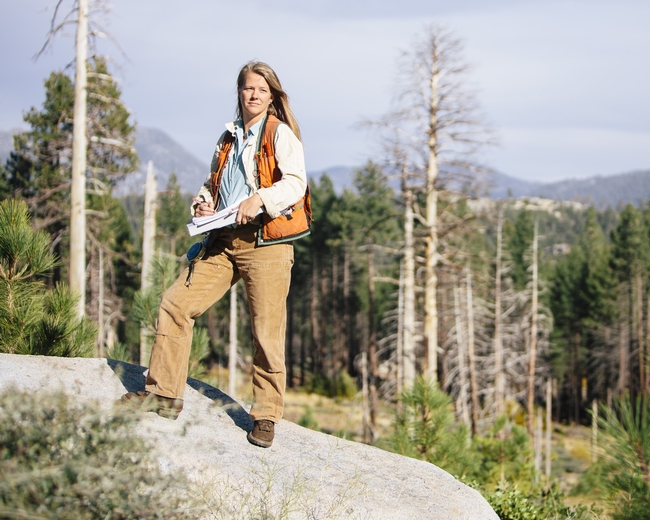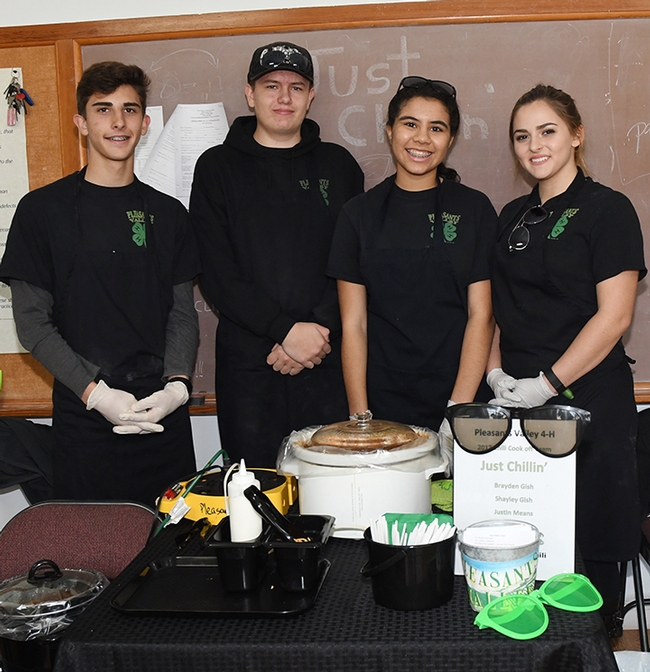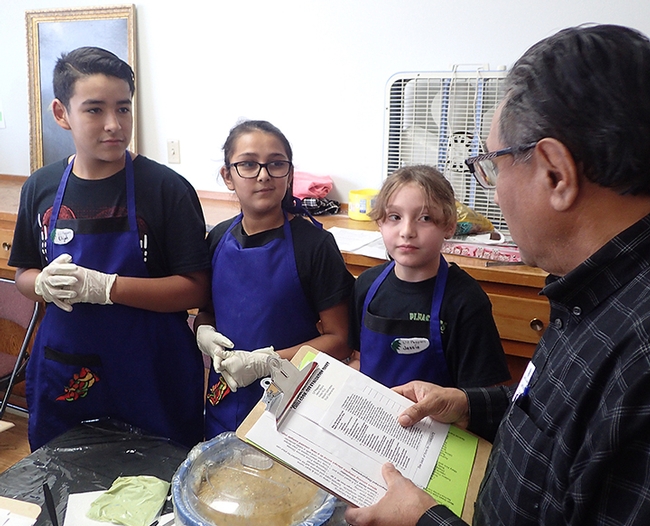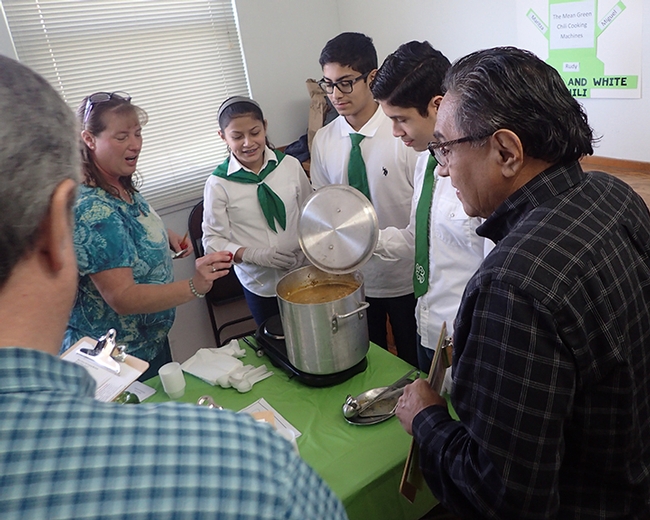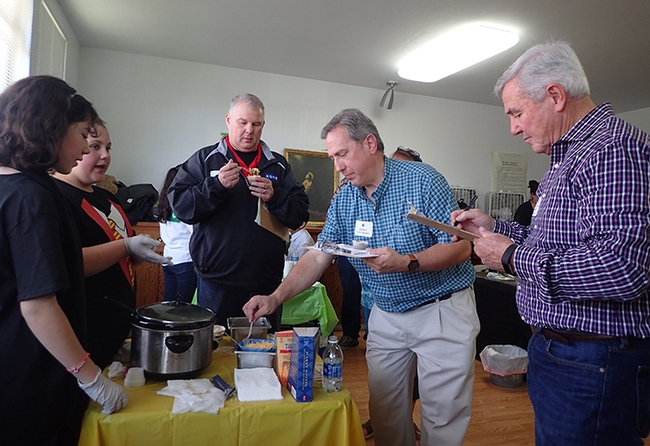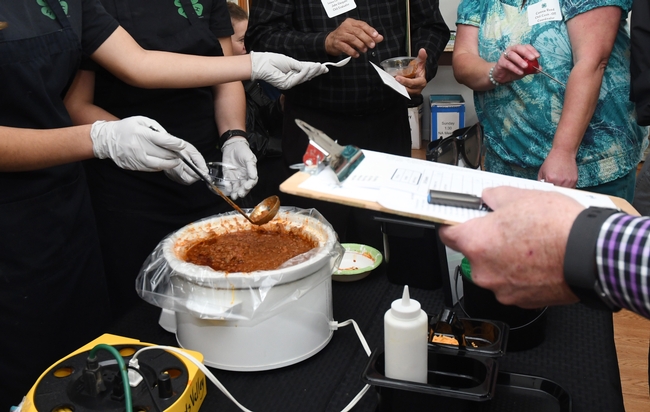
Posts Tagged: off
Invasive Pest Spotlight: Oriental Fruit Fly
The invasive pest spotlight focuses on emerging or potential invasive pests in California. In this...
Disaster resources available to prepare for heat, wildfire, power outages, quakes
September is National Preparedness Month, designated to encourage disaster and emergency readiness. To help Californians prepare for extreme heat, earthquakes, public safety power shutoffs and wildfire, University of California Cooperative Extension has created a disaster preparedness website organized for quick access to critical information.
The website https://ucanr.edu/Disaster contains fact sheets with tips for getting prepared.
“Unfortunately, with a warming climate, we are facing more and more extreme climate-related events such as heat waves, wildfires, power shutoffs and storms. All Californians need to step up their preparedness efforts to be ready to meet this more uncertain future,” said Susan Kocher, UC Cooperative Extension forestry advisor, who co-authored the disaster preparedness resources for the website.
Extreme heat
The fact sheet for extreme heat events offers suggestions for avoiding heat exposure, such as identifying nearby cooling centers and covering windows to keep heat out. It also suggests things to do during hot weather such as staying hydrated, taking cool showers and keeping pets indoors. It describes symptoms of heat-related illnesses, which can have serious health effects.
Public Safety Power Shutoff
During extreme weather events, electrical power in high fire-threat areas may be shut off to prevent sparking. This precaution is known as a Public Safety Power Shutoff. A PSPS is most likely to occur from May to November, when conditions are the hottest and driest.
UC Cooperative Extension recommends signing up to receive PSPS alerts from your energy company. Experts also advise making a plan for medications that need to be refrigerated or medical devices that require power. To prevent foodborne illness, they offer suggestions for ensuring food safety during and after a power outage.
Wildfire and smoke
Wildfire smoke can harm your health. During wildfires, UC Cooperative Extension recommends wearing an N95 outdoors to reduce smoke exposure and taking steps to prevent smoke from entering buildings. To reduce wildfire risk, the website describes methods of removing flammable vegetation around homes.
Earthquakes
UC Cooperative Extension offers safety tips for before, during and after an earthquake. Identifying the safest place in your home during an earthquake in advance is helpful. For example, doorways are not the safest place to be in modern homes. Experts recommend crawling under a sturdy desk or table, while avoiding areas next to windows, beneath ceiling fixtures or near large items that may fall during an earthquake.
The website also offers resources on drought, food safety after a fire, and wildfire preparedness and recovery.
In 2020 and 2021, Cooperative Extension researchers from around the country held listening sessions with community members who had experienced extreme weather events and other types of disasters to learn what had worked well, what had not, and how communities could be strengthened.
In response, these disaster resources were developed by Kocher, UC Davis undergraduate student Caydee Schweitzer, Tracy Schohr, UC Cooperative Extension livestock and natural resource advisor, and Vikram Koundinya, UC Cooperative Extension evaluation specialist. The group plans to add fact sheets on more disaster topics in the future.
This project was funded by a USDA National Institute of Food and Agriculture Renewable Resources Extension Act grant.
MEDIA CONTACT: Susan Kocher, UC Cooperative Extension forestry advisor, sdkocher@ucanr.edu
Solano County 4-H Grows Great Cooks!
The Solano County 4-H Skills Day is an opportunity for 4-H'ers to show what they've learned in...
A super bowl of chili: Something to crow about
Life is just a bowl of…ch...no, not cherries!
Chili!
Make that chicken chili.
When the New England Patriots and the Atlanta Falcons square off at Super Bowl Sunday on Feb. 5 in Houston, odds are that feathers will fly and football fans will flock to heaping bowls of chili.
All chili aficionados have their favorite recipes, but white chili proved to be the winning alternative to red chili at the annual Solano County 4-H Chili Cookoff, held Jan. 14 in the Community Presbyterian Church in Vallejo.
The Lil' Peppers — three members of the Pleasants Valley 4-H Club, Vacaville — took home top honors with their “White Chili with Avocado Cream.” It was like putting a feather in the caps of chefs Jessie Means and Elijah Desmarais and his sister Maleah Desmarais. Advised by their cooking leader Marlene Means, they made the dish at home, delivered it to the cook-off in a crockpot, and answered a series of questions from four-judge panel.
They based their entry on a Cooking Light magazine recipe, but added agave to suit their tastes (they acknowledged they're not partial to one ingredient, serrano chile). They also substituted a can of white beans for a 15-ounce can of unsalted chickpeas (garbanzo beans).
The cook-off, which drew a total of five teams, was part of the Solano County 4-H Project Skills Day, an opportunity for youths to showcase what they've learned in their projects and to hone their display and presentation skills. The day ended with the cook-off.
“The Chili Cook-Off continues to be a big draw at Project Skills Day,” said Solano County 4-H program representative Valerie Williams. “Through their participation, 4-H team members develop life skills like organization, decision-making and communication. Not to be overlooked, team members gain practical knowledge about kitchen safety, food safety, food preparation and nutrition, while developing their chili recipes.”
The chili judges — John Vasquez Jr. of Vacaville and Skip Thomson of Dixon, both members of the Solano County Board of Supervisors; and fellow chili enthusiasts Robert Reed of Benicia and Will Cant of Vallejo — said they enjoyed all the dishes, but especially the chicken chili. They went for seconds.
“It was really good,” said Vasquez, a veteran cook-off judge, praising the intermingling of the flavors and the competence of the chefs.
Coordinator Connie Reid of the Sherwood Forrest Club in Vallejo escorted the judges to each team's table, where the 4-H'ers introduced themselves and talked about their chili, the ingredients, the preparation and the outcome.
The Lil' Peppers' project all started with Jessie Means wanting to participate in the cook-off. She asked her mother and 4-H cooking project leader, Marlene Means, to help, and then Jessie recruited Elijah and Maleah Desmarais.
What to prepare? At most cook-offs, teams make red chili. The Lil Peppers decided on white chili, made with chicken and pork instead of beef.
For the cook-off, they donned blue aprons appliquéd with chili peppers, made by Jessie. They kept the decorations simple: a black tablecloth graced with a few chili peppers.
It was a great learning experience, Marlene Means said.
“The team learned to read and follow the recipe," she said. "They did have a few teary moments — cutting the onions. They were careful working with the peppers. All three worked very hard.”
When the 4-H'ers tasted their finished product, they decided it was "a little too spicy!” So they added a tablespoon of agave.
The end result: the team loved it, the judges loved it, and so did the crowd that grouped around their entry for samples.
“There were many repeat tasters,” Marlene Means said.
All three members of the Pleasants Valley 4-H Club are enrolled in cooking projects, but also a variety of other projects. Jessie, the club's historian, is enrolled in swine, rabbits, horse, sewing, food preservation, cooking, outdoor cooking, indoor mini gardens, baking and bread making, and dog care and training. Maleah is enrolled in fine art, outdoor cooking, rabbits, and cooking projects, while Elijah's projects are poultry, outdoor cooking and rabbits.
All the cook-off teams delighted in creating their own costumes. The Chili Girls of Sherwood Forest 4-H Club, Vallejo, dressed as penguins. Two Harry Potter fans from the Tremont 4-H Club, Dixon, opted for "tie attire." Another team from the Pleasants Valley 4-H Club, Vacaville, donned sunglasses; they were just chillin' when they served a chili reportedly favored by "The Duke" (John Wayne). Another group from Dixon, the Mean Green Chili Cooking Machine of the Dixon Ridge 4-H Club, came as themselves, in 4-H attire. Their chili lived up to their name; it was the hottest and was quite delicious, the judges agreed.
The members of the other teams:
- The Chili Girls from the Sherwood Forest 4-H Club, Vallejo: Selah Deuz, Celeste Harrison, Hanna Stephens and Julietta Wynholds
- Harry Potter and the Order of Chili, Tremont 4-H Club, Dixon: Isabel Martinez and Trinity Roach
- Just Chillin', Pleasants Valley 4-H Club, Vacaville: Braydon Gish, Shayley Gish, Justin Means and Maya Prunty
- Mean Green Chili Cooking Machines, Dixon Ridge 4-H Club, Dixon: Maritiza Partida Cisneros, Miguel Partida Cisneros and Rudy Cisneros Radillo
Here's the winning recipe that the Lil' Peppers prepared:
White Chili with Avocado Cream
Ingredients:
1 serrano chile (this is hot and can be omitted, the 4-H'ers agreed)
1 jalapeño pepper
1 medium onion, peeled and halved
Cooking spray
4 cups unsalted chicken stock, divided
2 tablespoons all-purpose flour
1-1/2 teaspoons adobo sauce
1 chipotle chile, canned in adobo sauce
2 (15-ounce) cans unsalted cannellini beans, rinsed, drained, and divided
5 -1/2 teaspoons olive oil
5 garlic cloves, minced
1 tablespoon ground cumin
1 teaspoon dried oregano
3/4 teaspoon ground coriander
1 pound ground pork
2 pounds skinless, boneless chicken breasts, cut into bite-sized pieces, browned
3 cups fresh white corn kernels
1 (15-ounce) can unsalted chickpeas (garbanzo beans), rinsed and drained (the 4-H'ers substituted 1 can of white beans)
1 cup half-and-half
3/4 cup chopped fresh cilantro, divided
1/3 cup plus 1-1/2 teaspoons fresh lime juice, divided
2-3/8 teaspoons kosher salt, divided
1 medium ripe peeled avocado
1/3 cup light sour cream
3/4 cup diced tomatillo
1 tablespoon agave or honey
Preparation:
- Preheat broiler to high.
- Arrange first 3 ingredients on a foil-lined baking sheet. Coat with cooking spray. Place pan on middle oven rack; broil 15 minutes or until charred on all sides, turning occasionally. Wrap peppers in foil; let stand 5 minutes. Peel peppers; discard peels, stems, and seeds. Combine peppers, onion, 1/2 cup stock, flour, adobo sauce, chipotle, and 1 can cannellini beans in a blender; process until smooth.
- Heat a large Dutch oven over medium-high heat. Add oil to pan; swirl to coat. Add garlic to pan; sauté 30 seconds. Add cumin, oregano, and coriander to pan; sauté 30 seconds. Add pork; cook 4 minutes, stirring to crumble. Stir in onion mixture and remaining 3-1/2 cups stock. Bring to a boil; reduce heat, and simmer 20 minutes, stirring frequently.
- Add chicken to pan; cook 5 minutes. Stir in remaining can of cannellini beans, corn, and white beans; cook 7 minutes. Reduce heat to medium-low. Stir in half-and-half, 1/2 cup cilantro, and 1/3 cup juice; cook 3 minutes. Stir in 2-1/4 teaspoons salt.
- Place avocado in a small bowl; mash with the back of a fork. Stir in sour cream, remaining 1 1/2 teaspoons juice, and remaining 1/8 teaspoon salt. Serve chili with remaining 1/4 cup cilantro, avocado cream, and tomatillo.
(Nutritional Information. Amount per serving: Calories 380; fat 18.6 grams; saturated fat 6 grams; monofat 8.3 g; polyfat 1.9 g; protein 30 g; carbohydrate 24 g; fiber 6 g; cholesterol 85 mg; iron 2 mg; sodium 592 mg; and calcium 86 mg)
Solano County, said 4-H Program Representative Valerie Williams, has nearly 500 4-H members enrolled in a total of 11 clubs:
- Dixon: Dixon Ridge 4-H, Maine Prairie 4-H, Roving Clovers 4-H and Tremont 4-H
- Vacaville: Elmira 4-H, Pleasants Valley 4-H and Vaca Valley 4-H
- Fairfield-Suisun: Westwind 4-H and Suisun Valley 4-H
- Rio Vista: Rio Vista 4-H
- Vallejo-Benicia: Sherwood Forest 4-H
The Solano County 4-H Youth Development Program, part of the UC Cooperative Extension Program of the UC Division of Agriculture and Natural Resources (UC ANR), follows the motto, “Making the best better.” 4-H, which stands for head, heart, health and hands, is open to youths ages 5 to 19. In age-appropriate projects, they learn skills through hands-on learning in projects ranging from arts and crafts, computers and leadership to dog care, poultry, rabbits and woodworking. They develop skills they would otherwise not attain at home or in public or private schools, said Williams, who may be reached at vawilliams@ucanr.edu for further information on the program.
Bumble Bees: Why They Thrive and Die
Remember the massive "buzz kill" in Wilsonville, Oregon back in June 2013 when more than 50,000...

A yellow-faced bumble bee, Bombus vosnesenskii, exits a foxglove in Vacaville, Calif. (Photo by Kathy Keatley Garvey)

A black-faced bumble bee, Bombus californicus, adjusting a heavy pollen load, visits "Purple Ginny" sage in the Häagen-Dazs Honey Bee Haven, UC Davis. (Photo by Kathy Keatley Garvey)



